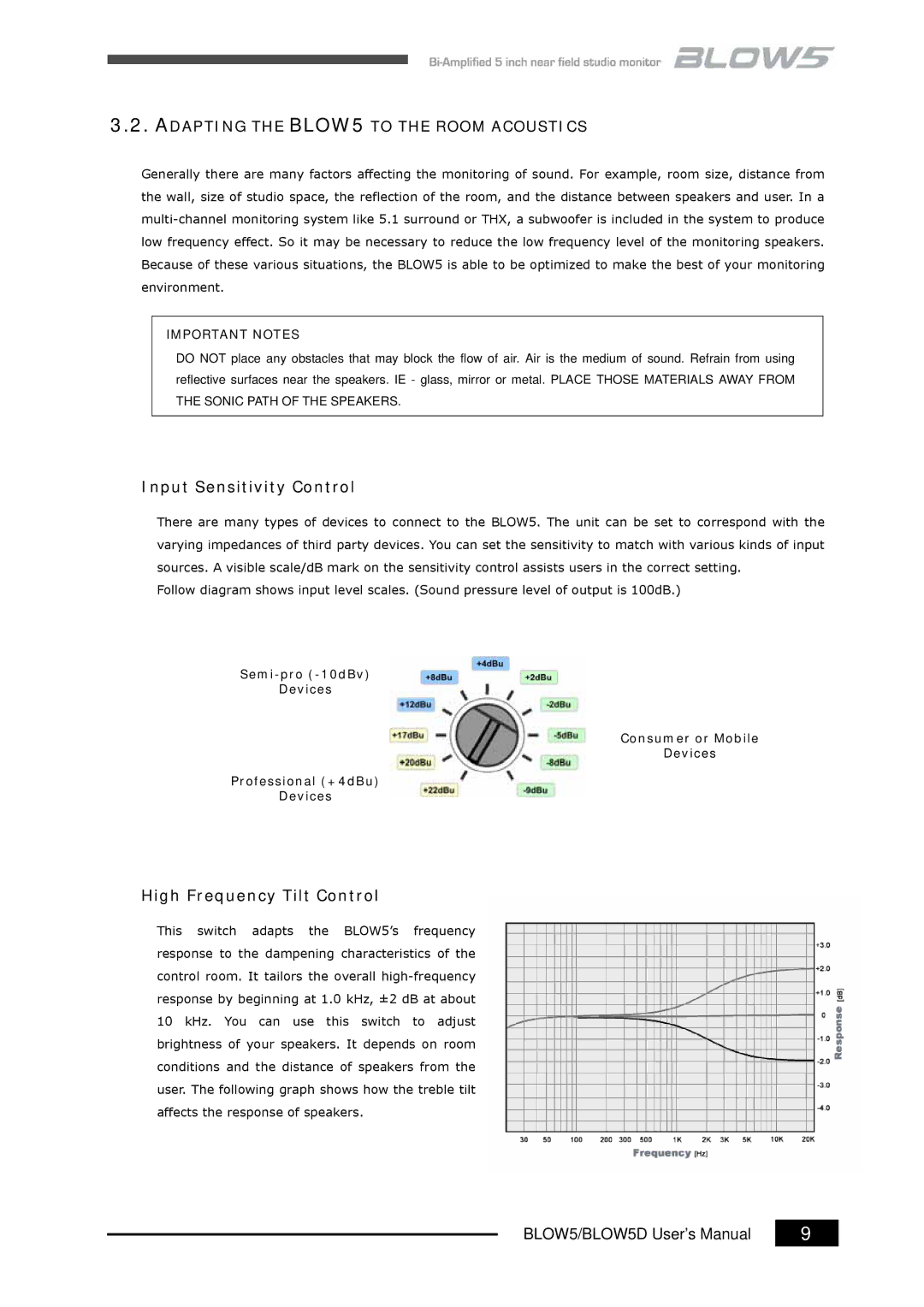
3.2.ADAPTING THE BLOW5 TO THE ROOM ACOUSTICS
Generally there are many factors affecting the monitoring of sound. For example, room size, distance from the wall, size of studio space, the reflection of the room, and the distance between speakers and user. In a
IMPORTANT NOTES
DO NOT place any obstacles that may block the flow of air. Air is the medium of sound. Refrain from using reflective surfaces near the speakers. IE - glass, mirror or metal. PLACE THOSE MATERIALS AWAY FROM THE SONIC PATH OF THE SPEAKERS.
Input Sensitivity Control
There are many types of devices to connect to the BLOW5. The unit can be set to correspond with the varying impedances of third party devices. You can set the sensitivity to match with various kinds of input sources. A visible scale/dB mark on the sensitivity control assists users in the correct setting.
Follow diagram shows input level scales. (Sound pressure level of output is 100dB.)
Devices
Consumer or Mobile
Devices
Professional (+4dBu)
Devices
High Frequency Tilt Control
This switch adapts the BLOW5’s frequency response to the dampening characteristics of the control room. It tailors the overall
BLOW5/BLOW5D User’s Manual | 9 |
